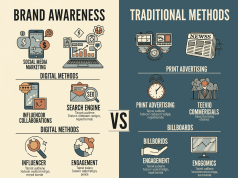In today’s digital landscape, having an effective marketing technology (martech) stack is essential for businesses aiming to reach their customers efficiently and effectively. An optimized martech stack not only supports marketing efforts but can enhance overall business operations by streamlining processes and improving customer engagement. However, selecting the right tools can be overwhelming due to the plethora of available options. This guide outlines crucial steps to help businesses make informed decisions when choosing their martech stack.
1. Identify Your Business Goals
Before diving into the tools and technologies available, it’s vital to clearly define your business objectives. Consider questions like:
- What are your unique selling points?
- Who is your target audience?
- What marketing channels do you currently utilize or wish to explore?
- What are your short-term and long-term marketing goals?
By establishing clear business goals, you can ensure that your martech stack aligns with your overall strategy and effectively supports your marketing initiatives.
2. Assess Current Processes and Tools
Conduct an audit of your existing marketing tools and processes. Consider the following:
- Inventory Existing Tools: Document tools currently in use, along with their functionalities and the gaps they have.
- Evaluate Effectiveness: Assess which tools work well, which are underperforming, and what functionalities may be missing.
- Gather Feedback: Engage your marketing team in discussions about current tools and their pain points.
This assessment will highlight areas for improvement and inform your selection of new tools.
3. Define Your Budget
Budgeting is a critical aspect of choosing a martech stack. Determine:
- Total Budget: Understand what you can invest in technology, including both initial and ongoing costs.
- Cost-Benefit Analysis: Compare potential tool costs against the expected return on investment (ROI). Look for tools that offer scalable pricing options that won’t hinder growth.
4. Focus on Integration and Scalability
Your martech stack should ideally be a cohesive unit, with all tools integrating seamlessly. Consider the following:
- Open APIs: Look for platforms with robust open APIs that facilitate integration with other tools.
- Scalability: Ensure that the tools can grow with your business needs. A solution that works for a small team may not suffice as your business expands.
5. Prioritize User Experience
The usability of a tool can significantly impact its adoption and effectiveness. Consider:
- Ease of Use: Select tools that are user-friendly and minimize the learning curve for your team. Preferably, software should have intuitive interfaces and provide comprehensive training resources.
- Customer Support: Research the level of customer support available, including resources like tutorials, documentation, and live assistance.
6. Evaluate Features
Different tools come with varying features that may or may not align with your needs. Ensure you focus on:
- Must-Have Features: Identify essential functionalities that will directly support your marketing goals. For instance, if your priority is lead generation, look for sophisticated CRM and lead scoring capabilities.
- Additional Features: While not essential, features like analytics, automation, and personalization can add significant value.
7. Consider Vendor Reputation and Reviews
Before finalizing your choices, research potential vendors rigorously. Consider:
- Reputation: Look for reputable brands with a history of reliable products.
- Customer Reviews: Seek out third-party reviews and case studies to get a better understanding of the vendors’ performance and service.
8. Implement, Measure, and Optimize
Once your martech stack is in place, implementation is crucial. Establish practical timelines and training sessions to ensure proper usage across teams. Additionally:
- Measure Effectiveness: Utilize analytics tools to track performance and measure success against the objectives set earlier.
- Optimize Regularly: Regularly review your martech stack and make adjustments as necessary. The marketing landscape evolves quickly, so flexibility is key.
Conclusion
Choosing the right martech stack for your business is a strategic endeavor that requires careful consideration and planning. By following these steps, businesses can select tools that not only align with their current objectives but also adapt to future needs. A robust martech stack can empower marketing teams, enhance customer experiences, and ultimately drive growth. Balancing current needs with future potential is the key to harnessing the true power of marketing technology.









